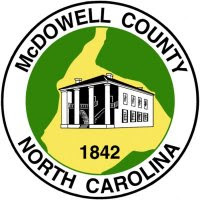Tuesday, January 29, 2008
Spread of the Exotic Zebra Mussel
Now to the point. Viral Hemorrhagic Septicemia (VHS) was first identified in the Great Lakes. VHS is a virus that has caused significant die-offs of different species of fish. I have heard it said that the spread of VHS might mimic that of the zebra mussel. I found this web site that follows the spread of the zebra mussel through the years. Take a look. Interesting.
United States Geological Survey Florida Integrated Science Center
Sunday, January 27, 2008
Genetic Research by USGS on Great Lakes VHS Strain
"This Great Lakes strain appears to have an exceptionally broad host range," said Winton. "Significant die-offs have occurred in muskellunge, freshwater drum, yellow perch, round goby, emerald shiners and gizzard shad."
Genetic research at the WFRC and by colleagues from Canada showed that this strain of the virus was probably introduced into the Great Lakes in the last 5 to 10 years, and that the fish die-offs occurring among different species and in different lakes should be considered as one large ongoing epidemic. The USGS genetic research also indicated that the Great Lakes' strain of the virus was not from Europe, where three other strains of the virus occur, but more likely had its origin among marine or estuarine fish of the Atlantic seaboard of North America. The strain is genetically most like samples of VHSV recovered during 2000-2004 from diseased fish in areas of New Brunswick and Nova Scotia, Canada.
The Great Lakes' strain has now been isolated from more than 25 species of fish in Lake Michigan, Lake Huron, Lake St. Clair, Lake Erie, Lake Ontario, Saint Lawrence River and from inland lakes in New York, Michigan and Wisconsin. Experts fear the disease could potentially spread from the Great Lakes into new populations of native fish in the 31 states of the Mississippi River basin. Also, if VHS virus is introduced into the aquaculture industry, it could lead to trade restrictions as well as direct losses from the disease.
Tuesday, January 15, 2008
Tax Tips for Your 2007 Returns
I thought that it would be appropriate that my first blog for 2008 be a topic that we all love….TAXES! Annette Dunlap, MBA, with NC State University provided these tax tips for agricultural producers. Enjoy!
For explanations, or a more comprehensive list, contact your CPA or tax advisor, or check out the Internal Revenue Service’s web site (www.irs.gov), or the NC Department of Revenue web site (www.ncdor.com).
Depreciation Methods. For property placed in service, farmers must use one of the following depreciation methods:
(2) The straight line method over the GDS recovery period.
(3) The 150 percent declining balance method over fixed ADS (Alternative Depreciation System) recovery periods, switching to the straight line method when that method provides a greater deduction.
(4) The straight line method over fixed ADS recovery periods.
longer limited to 50%.
New Contribution Rules. Beginning in 2007, individuals who give separate cash contributions (gifts) of any amount are required to obtain a receipt from the organization
Estimated Tax Payments. To avoid potential penalties, taxpayers with a 2007 adjusted gross income (AGI) of $150,000 or less should make estimated tax payments of
Self-employed health insurance deduction. The deduction for health insurance expenses of self-employed individuals and their spouses and dependents is 100% in 2007.
NORTH CAROLINA TAX CREDIT POINTERS
Property Taxes Paid on Farm Machinery.
